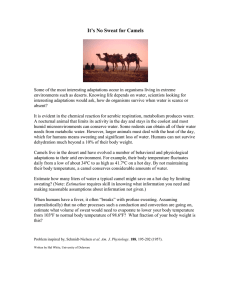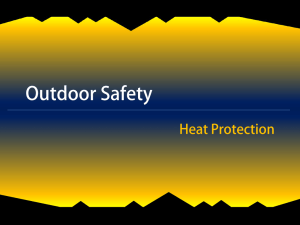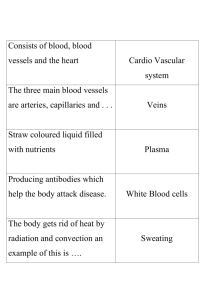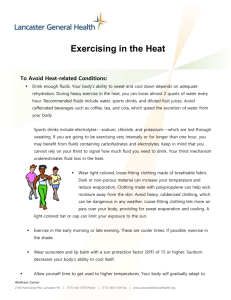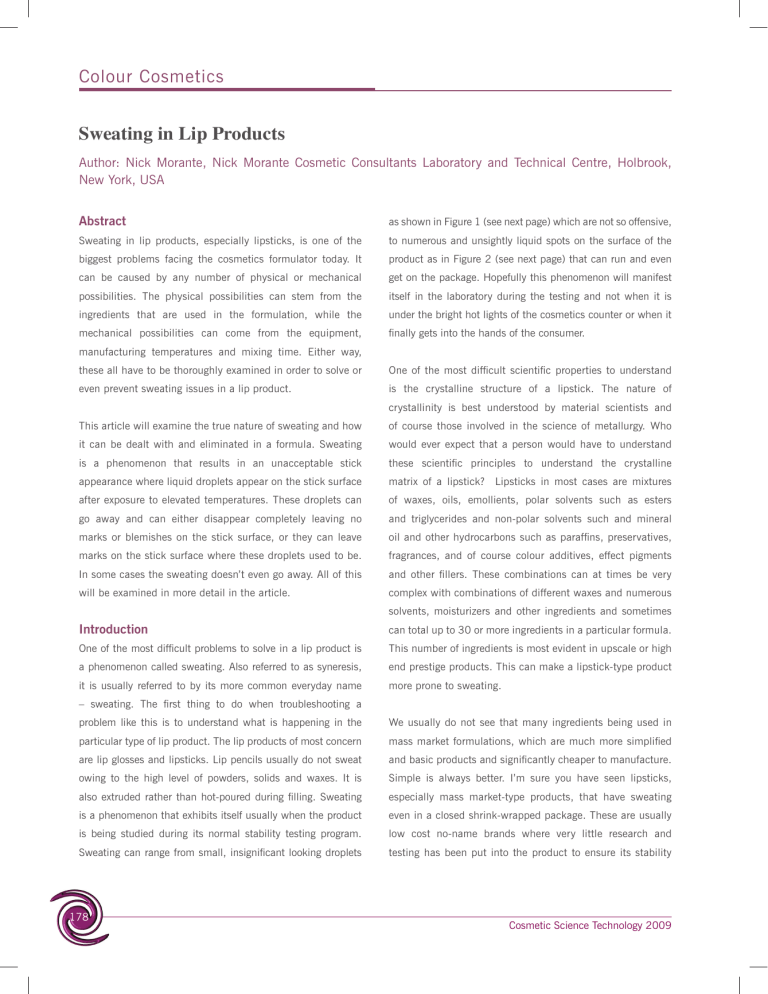
Colour Cosmetics Sweating in Lip Products Author: Nick Morante, Nick Morante Cosmetic Consultants Laboratory and Technical Centre, Holbrook, New York, USA Abstract as shown in Figure 1 (see next page) which are not so offensive, Sweating in lip products, especially lipsticks, is one of the to numerous and unsightly liquid spots on the surface of the biggest problems facing the cosmetics formulator today. It product as in Figure 2 (see next page) that can run and even can be caused by any number of physical or mechanical get on the package. Hopefully this phenomenon will manifest possibilities. The physical possibilities can stem from the itself in the laboratory during the testing and not when it is ingredients that are used in the formulation, while the under the bright hot lights of the cosmetics counter or when it mechanical possibilities can come from the equipment, finally gets into the hands of the consumer. manufacturing temperatures and mixing time. Either way, these all have to be thoroughly examined in order to solve or One of the most difficult scientific properties to understand even prevent sweating issues in a lip product. is the crystalline structure of a lipstick. The nature of crystallinity is best understood by material scientists and This article will examine the true nature of sweating and how of course those involved in the science of metallurgy. Who it can be dealt with and eliminated in a formula. Sweating would ever expect that a person would have to understand is a phenomenon that results in an unacceptable stick these scientific principles to understand the crystalline appearance where liquid droplets appear on the stick surface matrix of a lipstick? Lipsticks in most cases are mixtures after exposure to elevated temperatures. These droplets can of waxes, oils, emollients, polar solvents such as esters go away and can either disappear completely leaving no and triglycerides and non-polar solvents such and mineral marks or blemishes on the stick surface, or they can leave oil and other hydrocarbons such as paraffins, preservatives, marks on the stick surface where these droplets used to be. fragrances, and of course colour additives, effect pigments In some cases the sweating doesn’t even go away. All of this and other fillers. These combinations can at times be very will be examined in more detail in the article. complex with combinations of different waxes and numerous solvents, moisturizers and other ingredients and sometimes Introduction can total up to 30 or more ingredients in a particular formula. One of the most difficult problems to solve in a lip product is This number of ingredients is most evident in upscale or high a phenomenon called sweating. Also referred to as syneresis, end prestige products. This can make a lipstick-type product it is usually referred to by its more common everyday name more prone to sweating. – sweating. The first thing to do when troubleshooting a problem like this is to understand what is happening in the We usually do not see that many ingredients being used in particular type of lip product. The lip products of most concern mass market formulations, which are much more simplified are lip glosses and lipsticks. Lip pencils usually do not sweat and basic products and significantly cheaper to manufacture. owing to the high level of powders, solids and waxes. It is Simple is always better. I’m sure you have seen lipsticks, also extruded rather than hot-poured during filling. Sweating especially mass market-type products, that have sweating is a phenomenon that exhibits itself usually when the product even in a closed shrink-wrapped package. These are usually is being studied during its normal stability testing program. low cost no-name brands where very little research and Sweating can range from small, insignificant looking droplets testing has been put into the product to ensure its stability 178 Cosmetic Science Technology 2009
